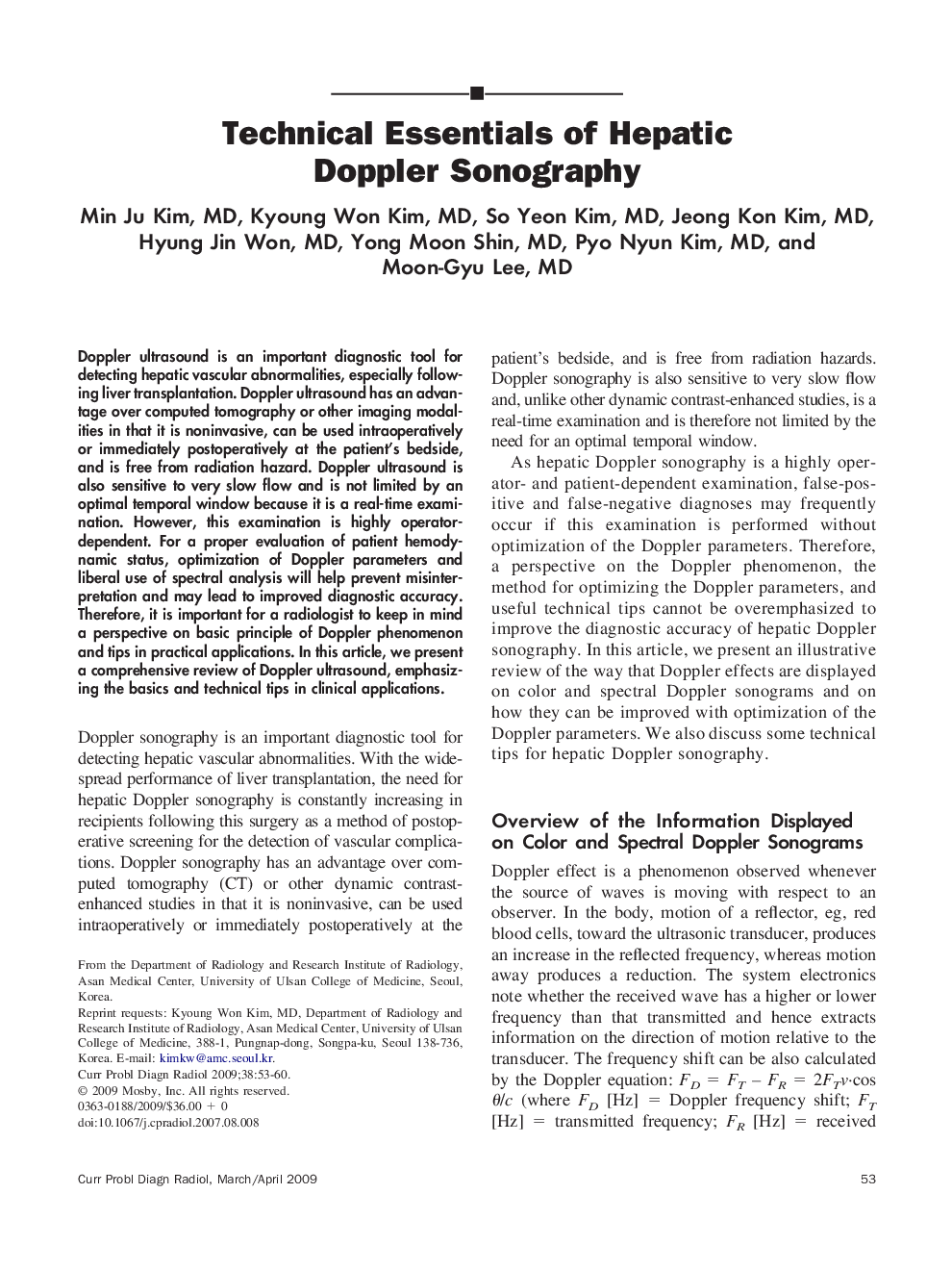| Article ID | Journal | Published Year | Pages | File Type |
|---|---|---|---|---|
| 4223851 | Current Problems in Diagnostic Radiology | 2009 | 8 Pages |
Abstract
Doppler ultrasound is an important diagnostic tool for detecting hepatic vascular abnormalities, especially following liver transplantation. Doppler ultrasound has an advantage over computed tomography or other imaging modalities in that it is noninvasive, can be used intraoperatively or immediately postoperatively at the patient's bedside, and is free from radiation hazard. Doppler ultrasound is also sensitive to very slow flow and is not limited by an optimal temporal window because it is a real-time examination. However, this examination is highly operator-dependent. For a proper evaluation of patient hemodynamic status, optimization of Doppler parameters and liberal use of spectral analysis will help prevent misinterpretation and may lead to improved diagnostic accuracy. Therefore, it is important for a radiologist to keep in mind a perspective on basic principle of Doppler phenomenon and tips in practical applications. In this article, we present a comprehensive review of Doppler ultrasound, emphasizing the basics and technical tips in clinical applications.
Related Topics
Health Sciences
Medicine and Dentistry
Radiology and Imaging
Authors
Min Ju MD, Kyoung Won MD, So Yeon MD, Jeong Kon MD, Hyung Jin MD, Yong Moon MD, Pyo Nyun MD, Moon-Gyu MD,
